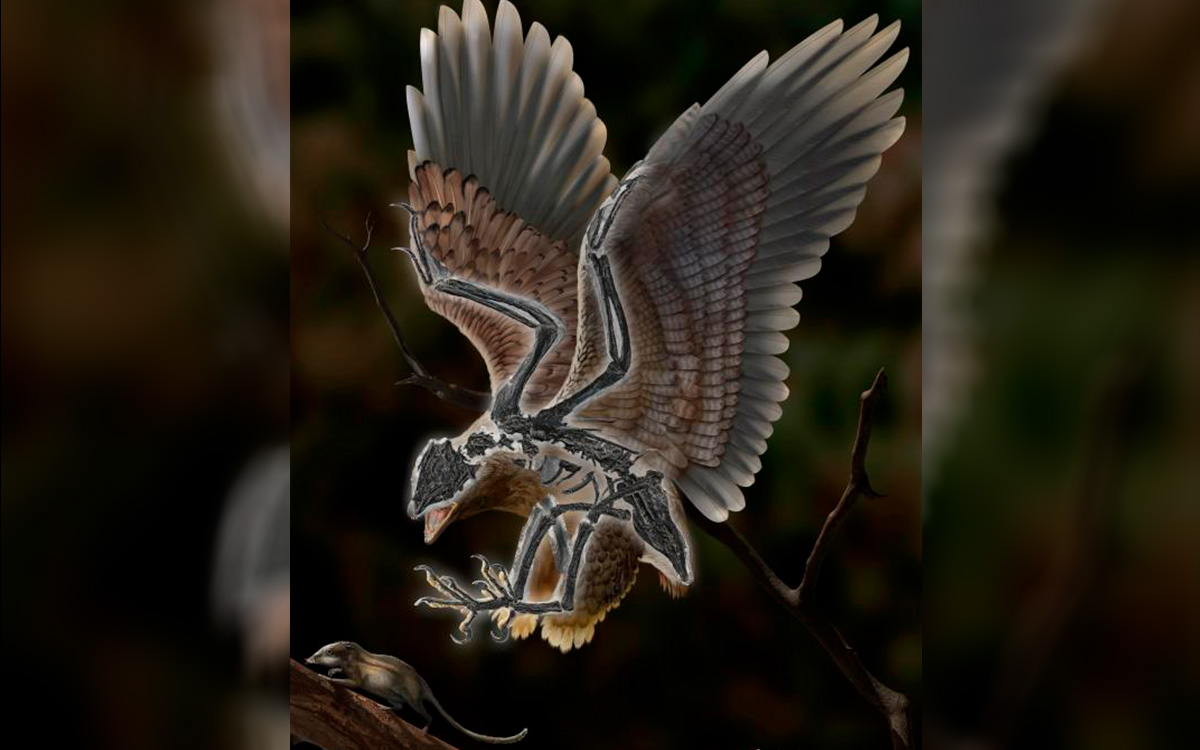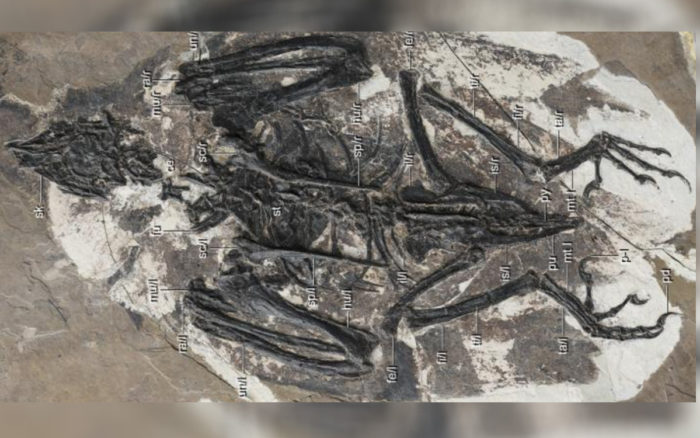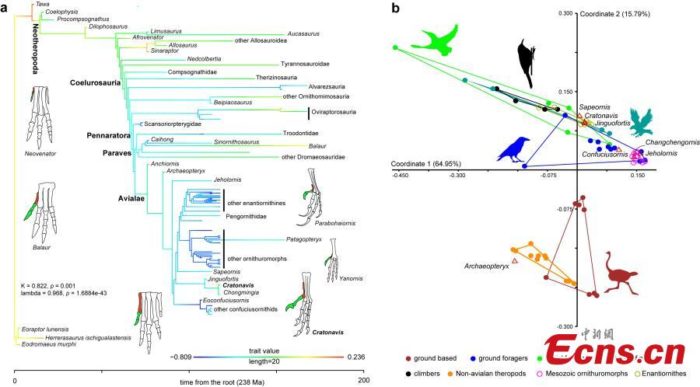In China, they found a strange bird with a skull almost like that of a Tyrannosaurus Rex

The theory that birds descended from dinosaurs is now widely accepted. It is also understood that this transition includes some of the most dramatic morphological, functional, and environmental shifts that ultimately led to the formation of the distinctive body structure of birds.
However, paleontologists are still scratching their heads to understand how this remarkable evolutionary event came about, which is why the recent discovery of Chinese Academy of Sciences: Cratonavis zhui.
It comes to A whole new fossil bird which are found in the Asian country, 120 million years, Chinese experts say it further complicates this problem by displaying an articulated dinosaur-like skull with a bird-like body.
In addition, the experts explained, through a statement, that this fossil specimen It retains a strikingly elongated scapula and first metacarpals, which make it distinct among all other birds, including fossils.
The study, published in the journal Nature Ecology & Evolution on January 2, was conducted by paleontologists from the Institute of Vertebrate Paleontology and Paleoanthropology (IVPP) of the Chinese Academy of Sciences.
Cratonavis sits between the long-tailed Archeopteryx and Archaeopteryx (which actually evolved many of the traits of modern birds) on the bird evolutionary tree.
The scientists said that to study the fossil skull they used high-resolution computed tomography (CT) imaging for the first time. Then they digitally extracted the bones from their rock-cut tomb and reconstructed the skull’s original shape and function.
The result shows that The skull of Kratonavis is nearly identical morphologically to that of dinosaurs such as Tyrannosaurus rex rather than being bird-like. “The primitive skull features speak to the fact that most Cretaceous birds, such as Kratonavis, could not move their upper beak independently in relation to the lower jaw and brain, a functional innovation widely distributed among living birds, which contributes to their enormous ecological diversity,” said Dr. Li Zhiheng, lead author of the study.
With regard to the external scapula and metatarsals of Cratonavis, Dr Wang Min, lead author and corresponding author of this study explained that the scapula is functionally important for bird flight and conveys stability and flexibility.
We trace changes in the scapula through the Theropod-Bird transmission, and hypothesize that an elongated scapula may increase the mechanical advantage of the muscle for humerus retraction/rotation, compensating for the underdeveloped overall flight apparatus in this primitive bird. These differences represent morphologically. Experimentation On early flight behavior in diverse birds.
According to the experts in their report, the new study shows just that The first metatarsals were selected during the transition from dinosaurs to birds, which favored shorter bones. It then lost its evolutionary change once it reached its optimal size, less than a quarter of the length of the second metatarsal.
“However, there was more evolutionary development between Mesozoic birds and their dinosaur relatives, which may result from conflicting claims associated with their direct employment of the hallux for locomotion and feeding,” said co-author Dr Thomas Stidham. For Kratonavis, the elongated hallux likely resulted from mindless selection behavior.
abnormal forms of Scapula and metacarpals preserved at Kratonavis highlight extensive skeletal plasticity in early birds, said Dr. Zhonghe Zhou, co-author. Changes in these elements along the theropod tree show branch-specific evolutionary change resulting from the interaction between evolution, natural selection, and environmental opportunity.

“Evil coffee nerd. Analyst. Incurable bacon practitioner. Total twitter fan. Typical food aficionado.”



:quality(70):focal(288x128:298x138)/cloudfront-us-east-1.images.arcpublishing.com/metroworldnews/4VWFN4IMGFGQTCCSYSVPIJDM4A.jpg)









